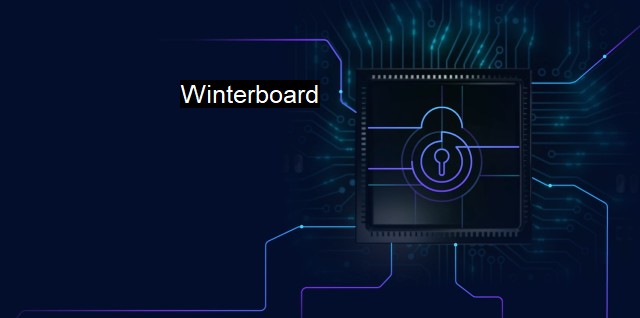What is Winterboard?
Winterboard and iOS Device Security: Exploring the Implications of this Popular Customization Application
Winterboard is a name commonly associated with the tech world, but it's not your traditional cybersecurity or antivirus application. Rather, it's associated with jailbreaking iPhones. This software enables Apple customers to personalize their iOS devices beyond the standard customization levels predetermined by Apple Inc.You might be wondering: what does a tool used for iPhone customization have to do with the cybersecurity and antivirus landscape? Understanding this requires delving deeper into what Winterboard is and its implications for the security of the devices in which it operates.
In layman's terms, Winterboard is essentially a theming engine designed for iOS by Jay Freeman, the man behind Cydia. Cydia is an open-source distribution platform that's commonly applied on jailbroken iPhones so that users can obtain multiple applications not approved by Apple. Released to cater to the demand for innovative personalization options, Winterboard offers countless downloadable themes that can dramatically transform an iPhone's entire look. From the dock, status bar, icons to the keyboard, the tool overrides Apple's default data resources. That’s a level of customization that is unimaginable in an Apple product straight out of the box.
Winterboard comes into play in cybersecurity and antivirus discussions because jailbreaking an iPhone contradicts Apple's stringent security architecture. Apple invests heavily in their security design to protect users against digital threats. They vet every application on their App Store, ensuring users only download secure, reliable programs. This design protects users from data theft, viruses, malware, and zone incursions from hackers.
By undertaking a process like jailbreaking and installing software such as Winterboard and Cydia, a user overrides the designed security protocols, voluntarily putting their device at an increased risk of encountering a cybersecurity threat. In an ordinary environment, if an application or file tries to alter the system files, the operating system blocks it. jailbreaking gives such programs the carte blanche to intrude and modify system files, posing genuine security risks given the absence of Apple's initial restrictions. The moment one takes down the preset security walls by jailbreaking, the otherwise protected device becomes vulnerable.
With these additional customizations from Winterboard also comes the risk of installing themes or components that carry malicious scripts. When such themes infiltrate a user’s device, they can extract personal information, activate hidden processes or damage existing software and functionalities. It creates an enticing gateway for hackers and software architects with malevolent intentions. Antivirus programs in such environments may not function correctly, leaving these mobile devices wide open for digital assaults.
While jailbreaking may bypass some preset security measures, not all jailbroken devices are doomed to fall victim to malicious attacks. Diligent users can still maintain a reasonable level of security. It is important to only trust reputable sources when downloading new themes or applications. Deciding to use an old or less-known source dramatically increases one's risk of unwittingly installing malware.
Regardless, Winterboard offers an interesting case study concerning personalization versus security. While it allows extensive customization, the software also brings security issues that can't be disregarded. Therefore, when working on a jailbroken device like Winterboard, users need to determine if the aesthetics gained outweigh the security and potential antivirus concerns.
In the grandiose landscape of cybersecurity, facets such as Winterboard and the broader issue of jailbreaking take a back seat since they delve into user-end control rather than system-initiated security efforts. their analysis provides an invaluable perspective revolving around the flexibility-security trade-off inherent in modern cybersecurity paradigms. Users should understand the risks and follow the best possible measures to protect their data. But the question remains, should security get compromised for aesthetics, or should aesthetics get compromised for security? It is an individual choice and will vary from one user to another.

Winterboard FAQs
What is Winterboard?
Winterboard is a theme manager application that allows users to customize the appearance of their iOS devices.Is Winterboard safe for my iOS device?
Winterboard itself is generally safe to use, but installing themes from third-party sources can potentially expose your device to security vulnerabilities.Can Winterboard be used to improve cybersecurity on my iOS device?
No, Winterboard does not have any antivirus or cybersecurity features. Its only purpose is to customize the appearance of your device.How do I uninstall Winterboard from my iOS device?
To uninstall Winterboard, simply hold down the app icon until it starts to wiggle, then tap the "X" in the corner of the icon. Confirm the deletion and Winterboard will be removed from your device.| | A | | | B | | | C | | | D | | | E | | | F | | | G | | | H | | | I | | | J | | | K | | | L | | | M | |
| | N | | | O | | | P | | | Q | | | R | | | S | | | T | | | U | | | V | | | W | | | X | | | Y | | | Z | |
| | 1 | | | 2 | | | 3 | | | 4 | | | 7 | | | 8 | | |||||||